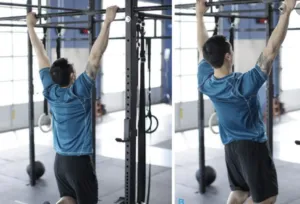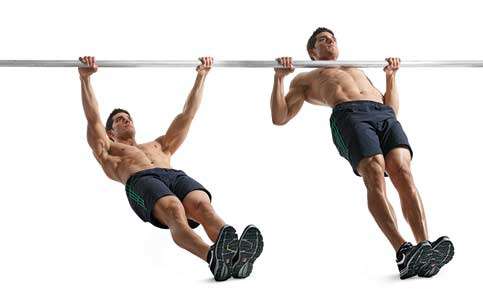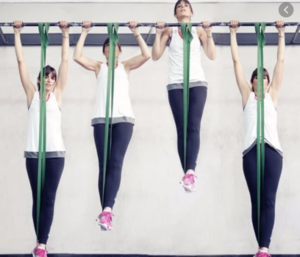Hi Friends of Oompf, it’s Alvan here. Today we will be talking about working towards your first pull-up!
If you’ve been training for awhile now but can’t seem to perform your first pull-up, this article is for you!
Doing a pull up is possibly one of the most difficult bodyweight movement for women to learn and although achieving a pull up may not be one of your fitness goals, they are actually an amazing exercise for back strength and endurance. Furthermore it can improve your posture, muscular development, and help you move more weight safely. However many of us get intimidated of the thought of attempting a pull up and failing and as a result we avoid the exercise completely. Well I’m going to share some tips that can help you gain confidence and achieve your first pull up!
1. Reduce your bodyweight
This may seem like a no brainer but a reduction in body weight will also mean that you will be pulling a lesser weight. Similarly, if you’ve just accomplished 1 pull up, you may notice that even a 1kg weight gain will make that pull up much harder.
2. Work on different parts of your back muscles.
Doing a pull-up requires a bunch of different muscles in your upper body so they best way to achieve that pull up is to strengthen each individual muscle instead of just thinking of the back muscle as a whole. Just to list a few, a pull up requires your middle and lower trapezius, rhomboids, pectoralis major and minor, deltoids, infraspinatus, latissimus dorsi, teres major and more. Hence incorporating different back/upper body exercises to target the different areas of your back is imperative if you are trying to get your pull up.
3. Work on pull up progressions

Dead Hangs/ Hanging Shrugs
These require you to hang on the bar while keeping your core tight and shoulders retracted to minimize swinging on the bar.

Inclined pull ups.
These require your feet or heels to be on the ground while you pull your chest up to a low positioned bar, using your lower body strength to assist you.

Resistance band pull ups.
Once your inclined pull ups start to become easy, you then want to try working on resistance band pull ups. Start off with a heavier resistance band and slowly work your way towards the lighter bands as your get stronger. These will help you to train the muscles needed to perform a pull up without you having to pull your full body weight.

Negative pull ups.
Perform this by starting at the top range of the pull up and slowly lower yourself downwards. You can do this by stepping on a high box or jumping up into position. Try to slowly lower yourself down in 10 to 15 seconds, and repeat as many times as you can while conserving a proper execution form.
Try working on a chin up first
Most people find doing a chin up easier than a pull up. The difference with these are the way you grip the bar. With the chin up you use more biceps making it easier than a pull up which requires more back. Performing a chin up first will also give you more confidence that you can actually pull yourself up.
Did you find this article useful? Email to us your feedback at [email protected]
Weighttraining #LesMills #Dumbbell #Highintensityintervaltraining #stationarybicycle #Myfitnesspal #fitnessapp #pullup #personaltrainer

